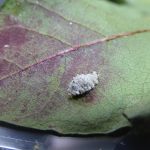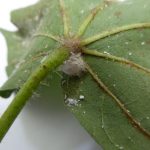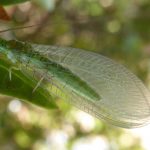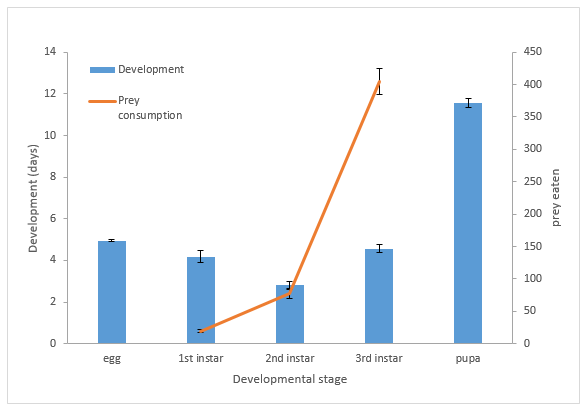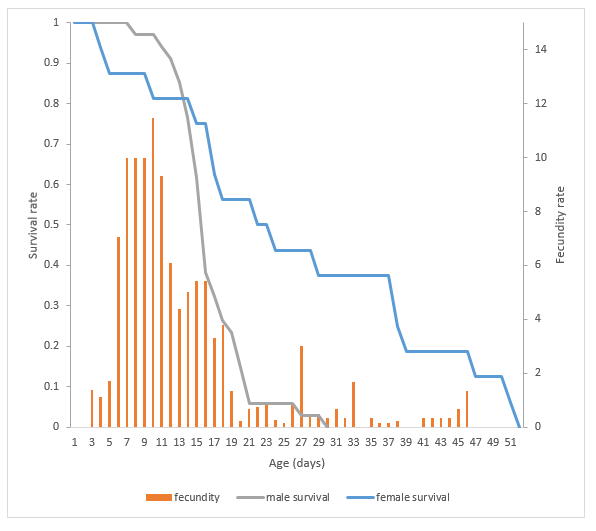Green lacewing larvae are generalist predators, and are important natural enemies of a range of pests including aphids, helicoverpa, whitefly and mealybugs.
There are many species of green lacewings in Australia, including some that commonly occur in field crops. Readers are most likely to be familiar with Mallada signatus, which regularly features in ID guides, but another species, Plesiochyrsa ramburi has been found by Queensland Department of Agriculture and Fisheries (DAF) researchers in cotton during solenopsis mealybug outbreaks, suggesting this species may play a key role in the biological control of mealybugs.
- P. ramburi larva
- P. ramburi pupa
- P. ramburi adult
While there have been some recent insecticide registrations and permits for the management of solenopsis mealybug in cotton, IPM (with a focus on regular/effective sampling, biological control, and minimal use of disruptive insecticides) is seen to be the most effective way to manage solenopsis mealybugs.
As part of the CRDC-funded project, ‘Mirid and mealybug management best practice’ we have studied a range of natural enemies. Most recently this has included Plesiochyrsa ramburi juvenile development and prey consumption, as well as adult lifespan and fecundity.
Results
In our experiments the juvenile stages averaged a total of 28 days at 25°C, and they consumed on average 500 mealybugs during their larval development (Figure 1).
Most species of green lacewing adults are not predatory and we suspect this is true for Plesiochrysa ramburi, so research focussed on adult lifespan and fecundity. On average adult males lived 17 days while females lived 22 days. Average fecundity was 111 eggs, with peak egg laying (about 10 eggs per female per day) occurring from days 7 to 11 (Figure 2).
While a comparison of mealybug consumption of M. signatus and P. ramburi under laboratory conditions showed no significant difference in the numbers of mealybugs devoured (Figure 3), field observations of large numbers of P. ramburi present near mealybug hotspots may indicate it is potentially the more useful biocontrol agent of these two lacewing species against solenopsis mealybug in cotton.
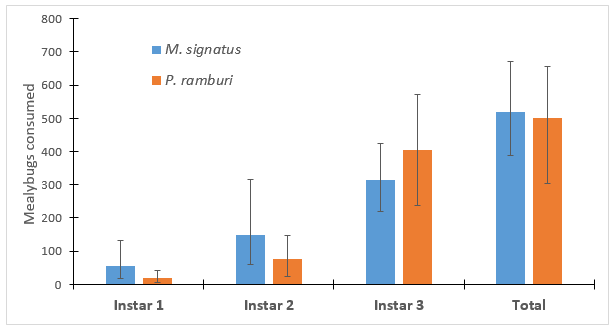
Figure 3. Consumption of mealybugs by Mallada signatus and Plesiochyrsa ramburi larvae (graph provided by Richard Sequeira)
Visually distinguishing between the two species
The late instar larva and adults of Plesiochyrsa ramburi are generally larger compared to Mallada signatus. A more distinctive difference when comparing adults are markings present on the pronotum (upper surface of thorax in front of wings) of Plesiochyrsa ramburi (Figure 4 shows difference in shape and markings between the two species). With experience these differences can be noted in the field while the insect is sitting still.
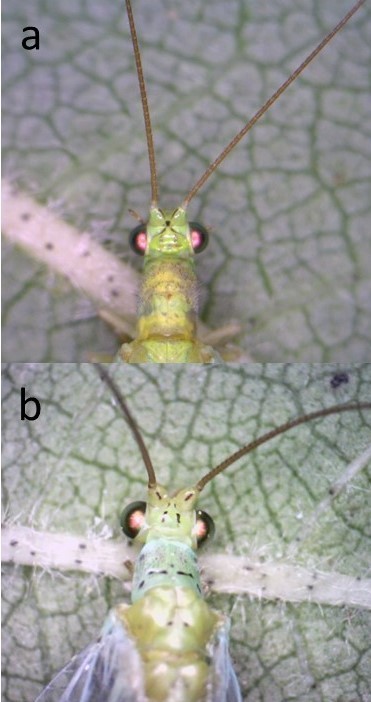
Figure 4. Head and pronotum of the two common lacewing species: (a) Mallada signatus has an elongated pronotum with minimal markings (b) Plesiochyrsa ramburi has a shorter pronotum with dark markings (this pattern can be variable, solid or dashed).
More information
- More information on lacewing identification is available in T.R. New 1980. A revision of Australian Chrysopidae (Insecta: Neuroptera) Australian Journal of Zoology.
- An article on the latest mealybug research ‘Breakthrough in mealybug control’ was printed in the Summer 2018-19 edition of Spotlight.
- Information about mealybug control is updated annually in the Cotton Pest Management Guide (the 2018-19 edition has a picture of Plesiochyrsa ramburi featured on the cover).
- View a Beatsheet video highlighting the differences between brown and green lacewing larvae, including images of green lacewings capturing and consuming mealybug, and adding camouflage.
- View a CottonInfo video on IPM in action, showing high numbers of green lacewings found in a mealybug hotspot.
Photographs by Jamie Hopkinson and Tonia Grundy.

